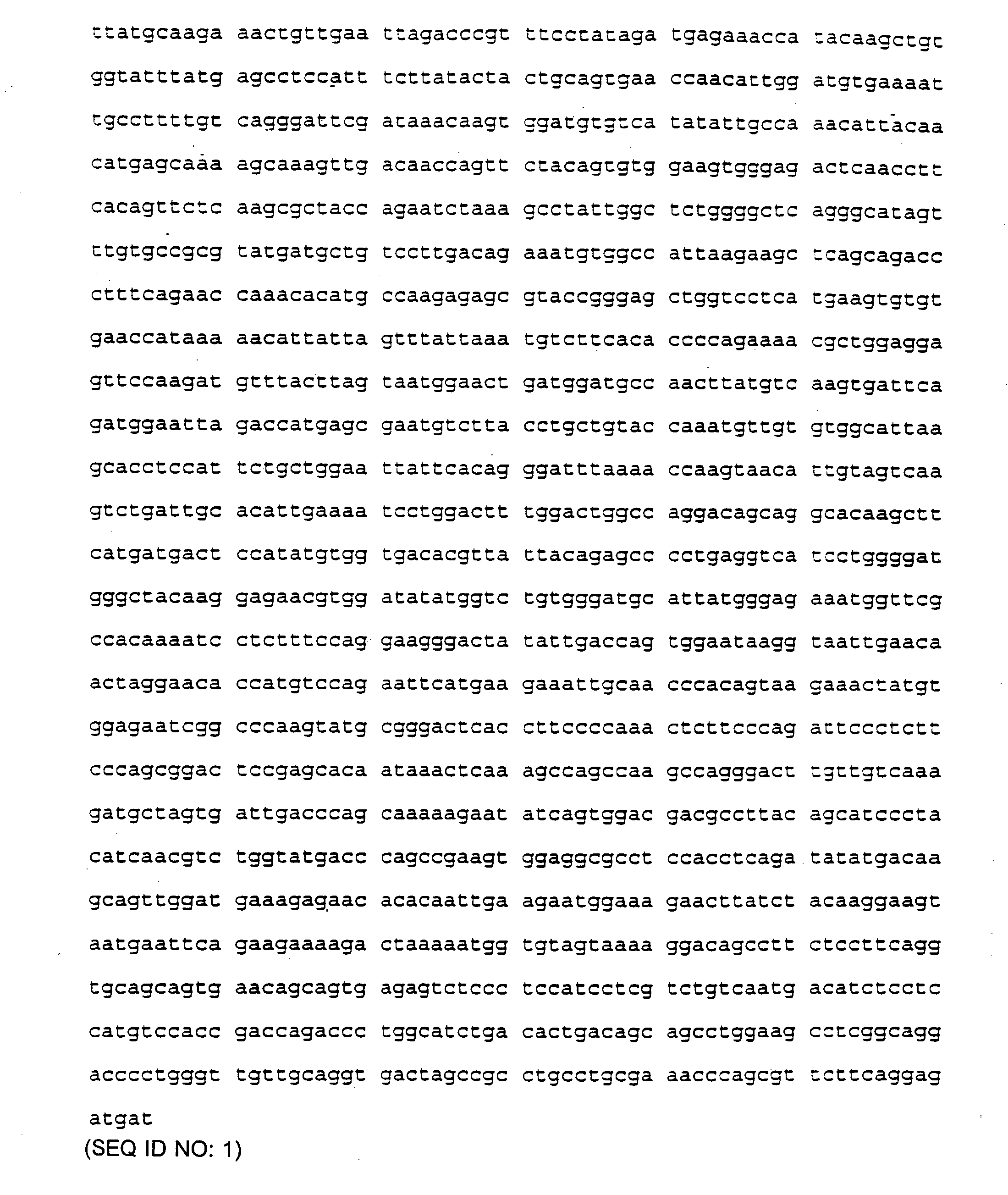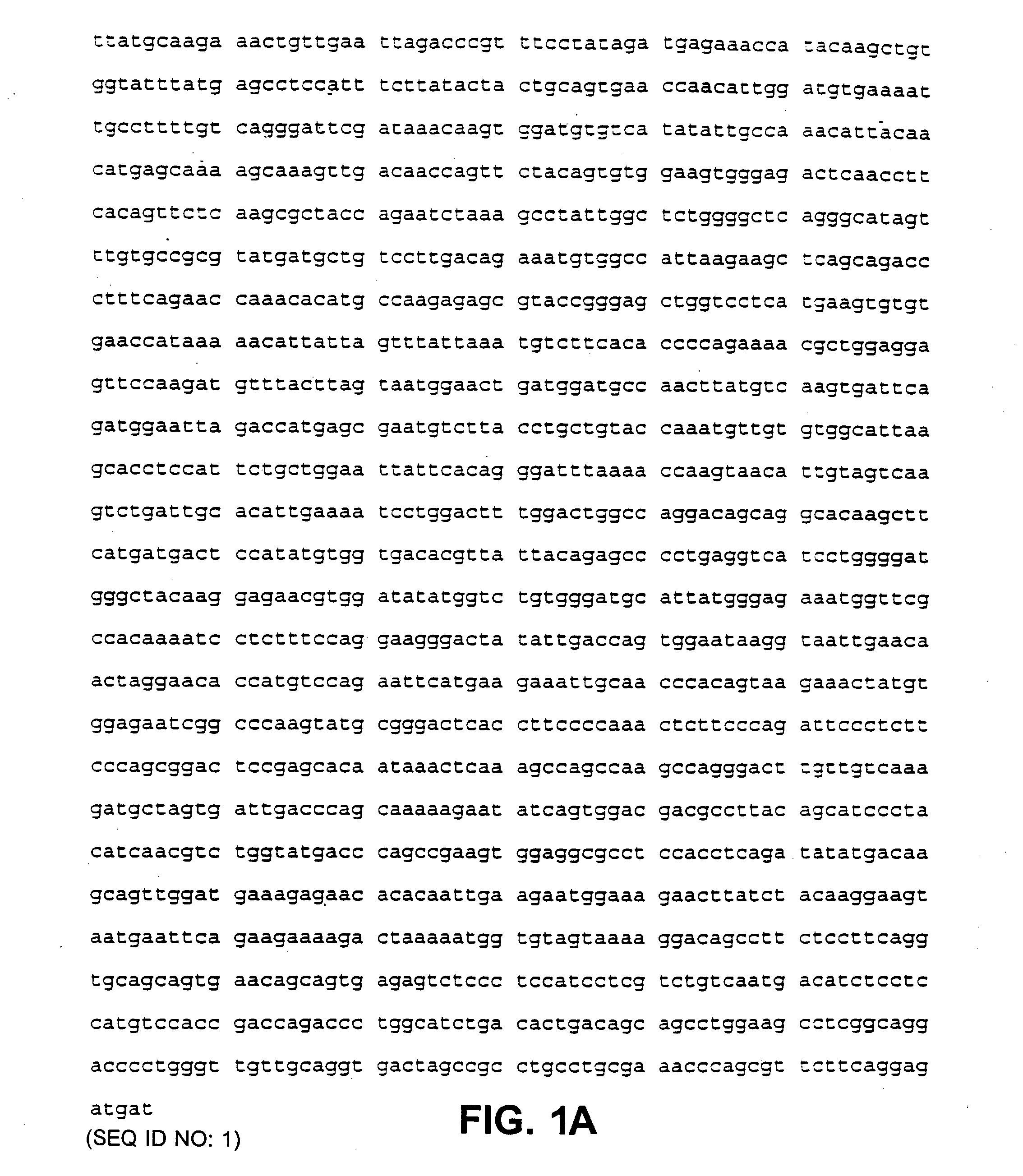JNK3 modulators and methods of use
a protein kinase and modulator technology, applied in the direction of enzymology, drug compositions, cardiovascular disorders, etc., can solve the problem that the requirement of c-jun for stress-induced neuronal apoptosis has not been tested, and achieves the effect of reducing side effects, minimizing potential damage to uninfected cells, and reducing therapeutic indices
- Summary
- Abstract
- Description
- Claims
- Application Information
AI Technical Summary
Benefits of technology
Problems solved by technology
Method used
Image
Examples
example 1
JNK3 Expression
[0112] A 351-bp sequence derived from the 5′ region of the mouse JNK3 cDNA (nucleotides 62-412) was labelled with [32P] by random priming and used as a probe to determine the tissue expression pattern of the JNK3 gene. Northern blot analysis was performed by standard methods on 2 mg samples of poly(A)+ mRNA isolated from testis, kidney, skeletal muscle, liver, lung, spleen, brain, and heart. All Northern blots were probed with [32P]-labelled β-actin as a control to ensure loading of similar amounts of RNA in each lane. A strong signal corresponding to a 2.7 kb transcript, as well as a weak signal corresponding to a 7.0 kb transcript, were detected in brain. A weak signal corresponding to a 2.7 kb transcript was also detected in the heart. A signal corresponding to a 2.4 kb transcript was detected in the testis. JNK3 expression was not detected in the other tissues examined.
[0113] In situ hybridization analysis has indicated that JNK3 is expressed in many regions of ...
example 2
Targeted Disruption of the JNK3 Gene
[0114] To generate JNK3-deficient mice, a targeting vector was designed to replace an internal 4 kb Mscl-Spel JNK3 genomic fragment with a PGKneo cassette. A map of the JNK3 gene, the JNK3 targeting vector, and the predicted structure of the mutated JNK3 gene are shown diagrammatically in FIG. 6. Restriction enzyme sites are indicated (B, BamHI; Hp, HpaI; M, MscI; Nco, NcoI; R, EcoRI; Spe, SpeI). A 10-kb NotI-EcoRI (the NotI site was vector derived) JNK3 fragment was cloned from a λ FixII phage library of a 129 / Sv mouse strain (Stratagene Inc.). The targeting vector was constructed by inserting a 4.0 kb MscI fragment from the 5′ end of the JNK3 genomic fragment, a 1.6 kb PGK-neo cassette (Negishi et al., Nature 376:435-438, 1995) and a 1.8-kb SpeI-NcoI fragment of the 3′ end of the JNK3 fragment into pBluescript KS vector (Stratagene Inc.) using appropriate linkers. The targeting vector contains a 2.6-kb PGK tk cassette (Negishi et al., supra) fl...
example 3
JNK3 Deficient Mice are Resistant to KA-Induced Seizures
[0121] JNK3(− / −) mice and their wild-type littermates were injected intraperitoneally (i.p.) with 30 mg / kg KA to induce seizures (Ben-Ari, supra). In wild-type mice, the administration of KA first induced “staring spells” with abnormal body posture, then progressed to head nodding (“wet-dog shakes”), fore-paw tremor, rearing, loss of postural control, and eventually, continuous convulsions. The seizure activities typically subsided one hour after injection. Wild-type and heterozygous mice developed motor symptoms of seizures, including rearing, at 30 to 40 minutes post-injection. The JNK3 (− / −) mice, in contrast, developed much milder symptoms, mainly consisting of “staring” spells and occasional myoclonic tremors. At this dose, JNK3 (− / −) mice did not develop grand mal seizures and recovered much faster than did wild-type and heterozygous mice. JNK3 (− / −) mice developed seizures of comparable severity to wild-type mice only a...
PUM
| Property | Measurement | Unit |
|---|---|---|
| thick | aaaaa | aaaaa |
| volume | aaaaa | aaaaa |
| temperature | aaaaa | aaaaa |
Abstract
Description
Claims
Application Information
 Login to View More
Login to View More - R&D
- Intellectual Property
- Life Sciences
- Materials
- Tech Scout
- Unparalleled Data Quality
- Higher Quality Content
- 60% Fewer Hallucinations
Browse by: Latest US Patents, China's latest patents, Technical Efficacy Thesaurus, Application Domain, Technology Topic, Popular Technical Reports.
© 2025 PatSnap. All rights reserved.Legal|Privacy policy|Modern Slavery Act Transparency Statement|Sitemap|About US| Contact US: help@patsnap.com



